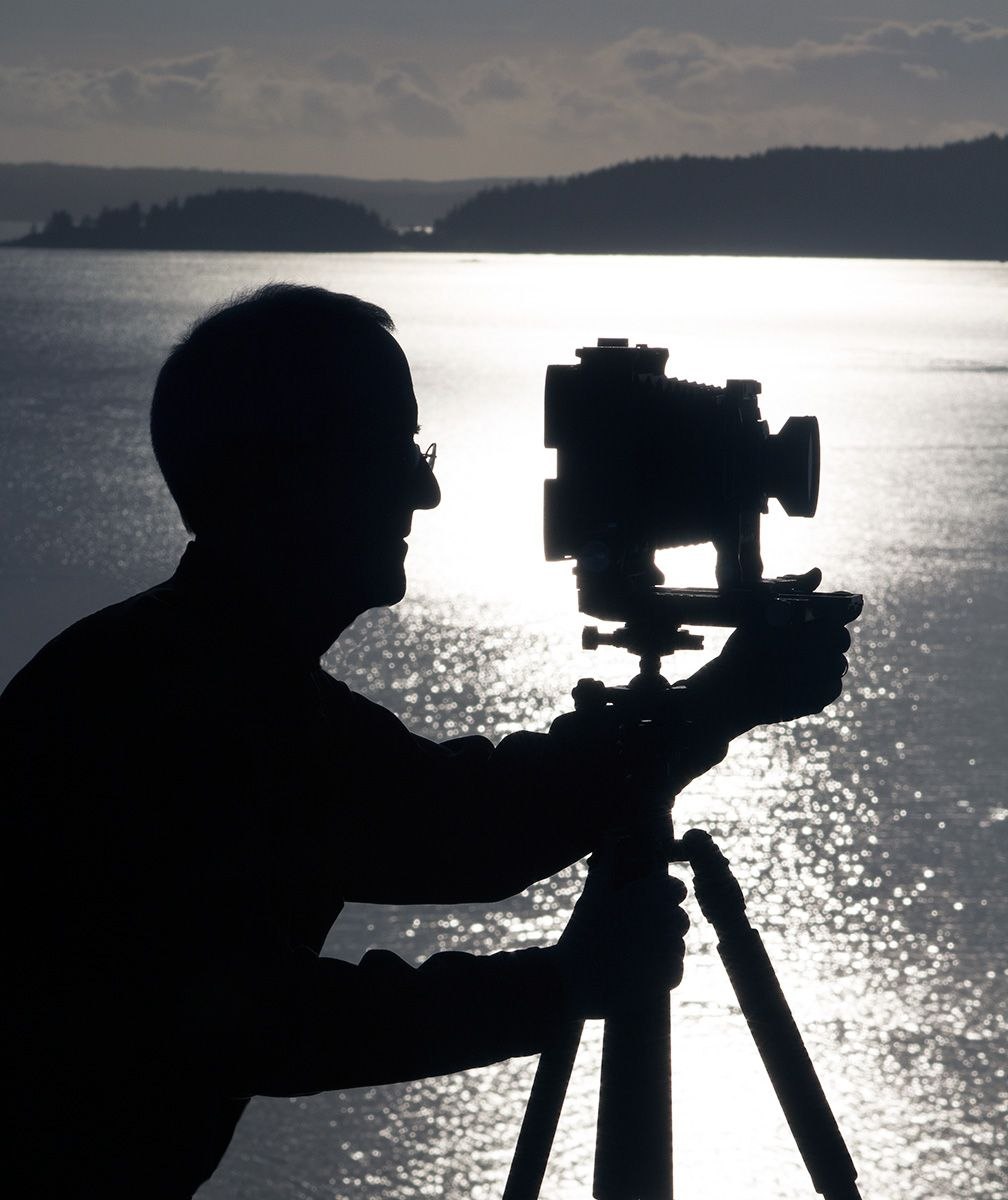Creative Process

When he began photographing, Baker thought of photography as a way of visually collecting experiences from his walks in nature. "Whatever caught my interest, I recorded, with no pretense about trying to express myself."
As he began his education, first informally by looking at anthologies of photography such as The Family of Man and This American Earth, and later through his formal undergraduate and graduate studies, his interest in how to use photography deepened.
"When I first saw Ansel Adams' Burnt Stump and New Grass, and Diane Arbus' Child with Toy Hand Grenade, I realized that photographs were more than simply documents - photographs could engage and inform us - personally, historically, culturally, politically and aesthetically."
He began to realize that the experience of taking a photograph and the experience of viewing the image were quite different. "The photographer Gary Winogrand once said, 'I photograph to see how something looks photographed.' When taking a picture, I learned to ask myself, 'What will this look like as a photograph?' and then used the camera as a tool to find out. I discovered I was more fascinated when I was driven by my curiosity than by an ambition to make a 'great' image'."
While initially he explored different directions in photography, Baker found his interest was consistently focused on the natural landscape. "I was influenced by many things I read and observed. The portrayal of landscape as backgrounds in paintings by Domenico Veneziano, Pieter Bruegel the Elder, Claude Lorraine and Yves Tanguy, deeply influenced how I convey my own sense of the natural world - alternately raw, romantic, foreboding, affirming or surreal."
Baker has always felt an attraction to, and alienation from, the natural landscape. "Reading Joseph Conrad, particularly this passage from the Heart of Darkness, explained to me how I think about the natural world: "Going up that river was like traveling back to the earliest beginnings of the world, when vegetation rioted on the earth . . . you lost your way on that river as you would in a desert, and butted all day long against shoals, trying to find the channel, till you thought yourself bewitched and cut off for ever from everything you had known once - somewhere - far away - in another existence perhaps . . . there were moments when one's past came back to one, as it will sometimes when you have not a moment to spare for yourself; but it came in the shape of an unrestful and noisy dream, remembered with wonder amongst the overwhelming realities of this strange world of plants, and water, and silence. And this stillness of life did not in the least resemble a peace. It was the stillness of an implacable force brooding over an inscrutable intention” . . .
"My photographs are like Conrad's restless dreams showing me an overwhelming reality that can be silent and sentient, immediately in front of me and, also, quite distant from day-to-day life. They speak to my sense of oneness with and separation from, my attraction to and apprehension of the natural landscape."
